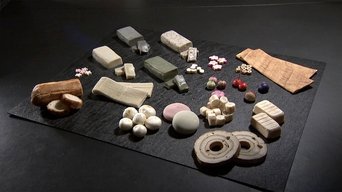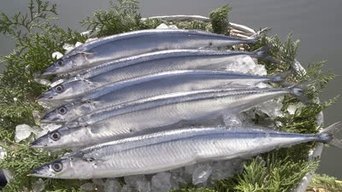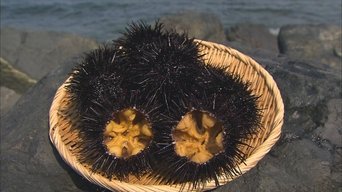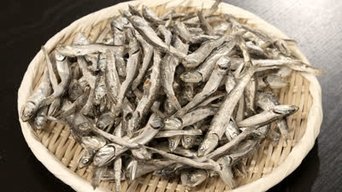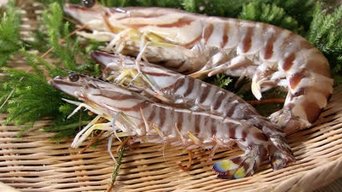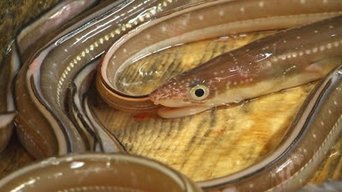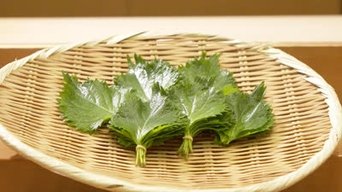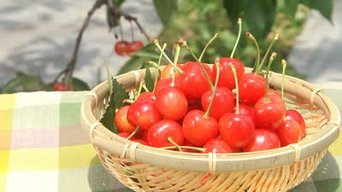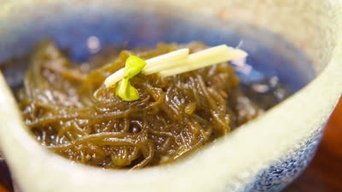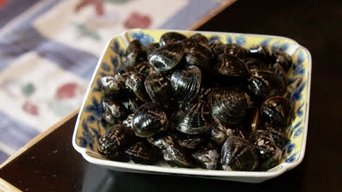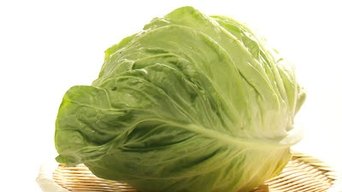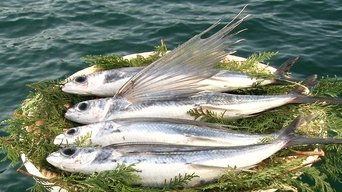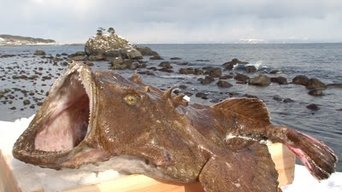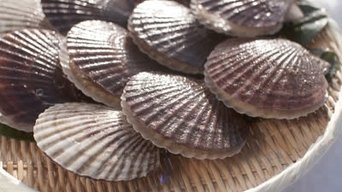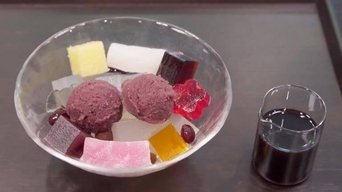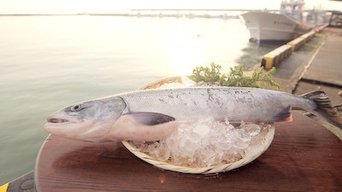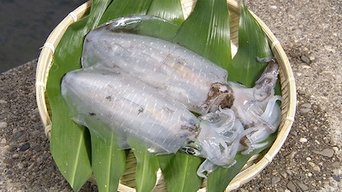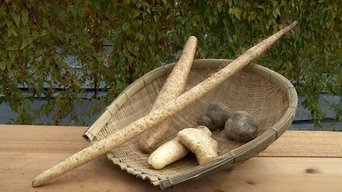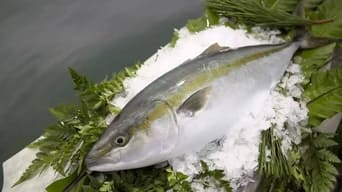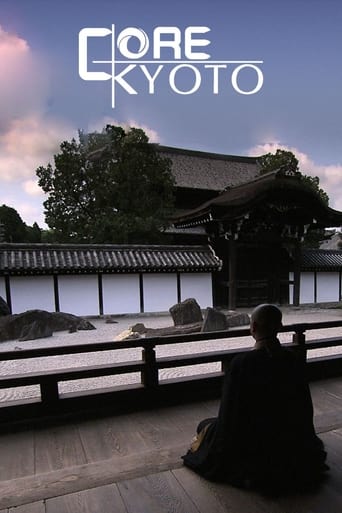
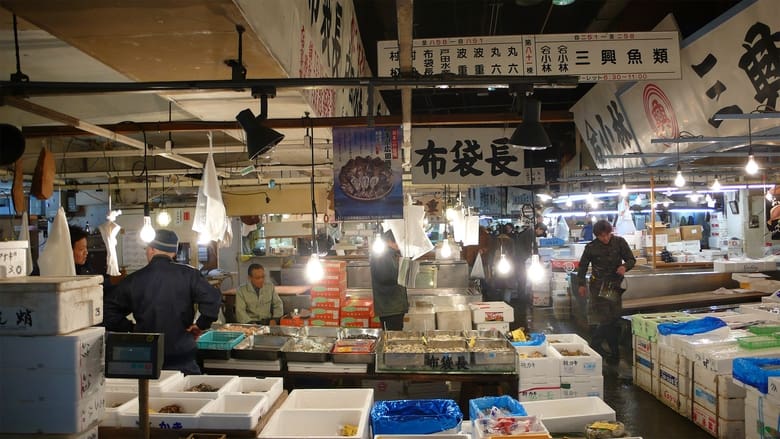
Trails to Tsukiji Season 4
"Trails to Tsukiji" is a show that focuses on Japanese food available at Tokyo's iconic Tsukiji Market where every kind of fresh food is gathered from around the country.
Watch Trailer
Trails to Tsukiji Season 4 Full Episode Guide
Fu is a processed, flour-based food eaten in Japan since ancient times. At first glance, it may look like bread, but it has few calories and lots of protein. This mysterious food soaks up umami like a sponge, making it a treasured ingredient in dashi soup stock-based Japanese dishes. Travel with us to an over 400-year-old city lined with beautiful buildings and streets to learn more about the elastic, kaleidoscopic treat called fu.
Sanma is a fish that glitters like a sword. In Japan, sanma is both extremely popular and reasonably priced, at around a dollar per fish. Rich in umami-packed fat, sanma is delicious when grilled with just a pinch of salt. It's also great as sashimi, in soup, and much more. This time, we visit Kesennuma, a famous sanma port in Tohoku, to learn all about this autumn treat. Why do the Japanese fall prisoner to sanma's charms every fall? Dive in and find out.
Native to Japan, like its western counterparts, lemon or lime, sudachi is used as a condiment or for its tangy, aromatic juice and is not consumed as a fruit. Its mellow acidity and aroma add an extra boost to Japanese cuisine. Where it once only grew wild, its popularity has now spread nationwide thanks to the endeavors of one small town. We visit Tokushima Prefecture, the production hub of sudachi, to capture its delicate charm.
The sea urchin: a thorny, mysterious sea creature whose umami-packed meat is loved in Japan, and is used in food ranging from sushi to traditional cuisine to even desserts. We visit the beautiful coast of Iwate Prefecture in Tohoku, northern Japan, to see the innovative ways sea urchin is cultivated. We also see how locals, including a railroad bento lunch box shop, use fresh sea urchin to create dishes you won't find anywhere else.
Niboshi is the silvery dried small fish used to make dashi in Japanese cuisine. A traditional ingredient of this island nation, they are like crystals of ancient wisdom cultivated by the Japanese dashi culture. In this episode, we chase the allure of the hidden star of dashi stock on the island of Ibuki-jima in the Seto Inland Sea, where over half of its inhabitants are involved in the production of its high-grade niboshi.
The most appealing thing about Japanese corn is its fruit-like sweetness. Hokkaido's large corn fields are home to many varieties, including one that's soft enough to eat raw, another with kernels as white as snow, and a flint corn with large, rich kernels. In addition, we showcase a popular cornbread people line up for hours to get their hands on, unique French dishes that feature corn's sweetness and texture, and much more.
This time, we focus on kuruma-ebi, considered the king of shrimp when it comes to Japanese cuisine. With its elegant appearance and full-bodied umami flavor, it's frequently featured as a good luck charm at celebratory feasts. We visit Amakusa, an island with spots recently given World Heritage status, and meet the producers dedicated to bringing the freshest, best-tasting kuruma-ebi to consumers.
Anago, or white spotted conger, has maintained its beloved status among the Japanese for over 3 centuries. Summer is the prime season for this vitamin-rich and high-protein snake-like fish prized as the perfect remedy for summer fatigue. Anago also plays an integral role in the refinement of the nation's most iconic dishes -- sushi and tempura. Together, let's explore the allure of anago by learning about its unique trapping method using pipes, and taste a variety of traditional anago dishes.
Japanese are one of the world's largest egg consumers. Featured in sushi and sukiyaki, eggs are an indispensable ingredient of their cuisine. Japan produces several thousand types of eggs with a wide spectrum of colors and taste to be enjoyed both cooked and raw. Let's explore a poultry farm pursuing innovative safety measures and get a taste of Japanese egg culture from tamago-yaki omelets, a popular item among Tsukiji's tourists, to tamago kake-gohan, fresh steamed rice topped with raw egg.
This time, our theme is shiso, a plant used as an herb in Japanese cooking. Shiso is known for its refreshing aroma, and is used to garnish sashimi, as a spice and more. Its anti-bacterial properties have long made it an essential part of Japan's culinary culture. We visit a farm that uses insects instead of agrochemicals to grow shiso organically. We also discover foods from traditional pickled shiso from Kyoto to a shiso-based alcoholic beverage gaining attention around the world.
Our theme this time is the sweet, red fruits that sparkle like rubies: cherries! In Japan, cherries are expensive, high-end fruits popular for gift-giving: one box can go for over 500 dollars. We visit Yamagata Prefecture, Japan's largest cherry-producing region, to see how its high-grade cherries are cultivated and selected. We also discover cherry-based desserts, French dishes and more.
Japanese consumers enjoy a number of edible types of seaweed, including our theme this time, mozuku. With its slimy, slippery texture, mozuku may seem a bit off-putting at first, but it's been gaining attention in recent years both in Japan and abroad for its many health benefits. We take a trip to the beautiful seas of Okinawa Prefecture to see how mozuku is harvested, and discover how it fits into Okinawa's unique culinary culture.
Shijimi: this tiny, coin-sized clam is beloved in Japan. Not only is it packed with nutrients like amino acids, it has a rich umami flavor and is a perfect match in miso soup. This time, we visit Lake Shinji, famous for its shijimi catch, and discover how these clams are dug, sorted with a surprising sound-based method, and used in a variety of delicious dishes. Come with us as we crack open the secrets of shijimi.
Leafy green cabbage has the largest trading weight among the produce sold at Tsukiji. When it comes to serving occidental dishes in Japan, thinly sliced cabbage is indispensable. Join us in the harvest of tender spring cabbage, a national favorite among raw vegetables, and learn simple recipes from those who grow them. Also discover the novel ways they are used in desserts, and learn more about the savory okonomiyaki pancakes, a Japanese comfort food fast becoming a mainstream item overseas.
Hotaru-ika is a small, roughly six-centimeter squid that's famous for emitting a pale blue glow. That explains its name, which translates to "firefly squid". We visit Toyama Bay on the Sea of Japan to see how this mysterious glittering squid is fished. We'll also see how it's cooked and enjoyed in a variety of cuisine, including sashimi, sushi, boiled with rice and more.
Gliding across the water on its wing-like fins, the flying fish is one unique creature. We visit Hachijojima, a lush volcanic island that's officially a part of Tokyo, to visit fishermen who work through until dawn to catch this mysterious fish. We also see how it's prepared and eaten in dishes as diverse as sushi, meatballs and even ramen. Finally, we get a glimpse of Hachijojima's rich natural beauty, including hot springs, waterfalls, lava plateaus and even whales.
Anko, or anglerfish, look like something from another planet. But despite their shocking appearance, these fish have a rich yet delicate flavor and are known as the main ingredient in anko hot pot, a winter treat. We visit a small village in Aomori Prefecture known for its anko, and witness a giant, once-in-a-year catch. We also discover unique cultural traditions, including a ritual in which anko are filleted on top of snow, plus homegrown dishes based on anko liver, considered a great delicacy.
Among all of Japan's consumable exports, the food that holds the highest value is the focus of today's episode: scallops. We visit chilly Hokkaido to learn about scallop aquaculture, which has sparked a revolution in production volume, and discover some unique dishes only available where scallops are farmed. We also check out a surprising use for scallop shells, and meet a chef who uses only the finest scallops in his high-end Chinese cuisine.
Kanten, sometimes called agar in English, is a gelling agent used in traditional Japanese sweets. Unlike gelatin, kanten is completely plant-based, and comes from one of Japan's most plentiful resources: seaweed! From confections that celebrate the seasons, to delicacies that combine Japanese and French cooking, to new applications in fields like medicine and nursing care, we dig deep into this wondrous ingredient.
Cod: this fish is eaten around the world, where it's commonly used in fish and chips or salted. In Japan, where it's called tara, cod is an essential ingredient in winter hot pot dishes. In fact, cod is in season in winter, when it's about to spawn. This time, we visit cod fishing areas and try some unique cod-based cuisine, and drop by a restaurant that uses cod's rich umami in Italian recipes.
Salmon is Japan's most-consumed fish. During the season in autumn, one day of salmon trade at Tsukiji can exceed 1 million dollars! In Japan, salmon is commonly eaten salted and served on rice. We visit Hokkaido, where 80% of Japan's wild salmon is caught, to learn more about the fish, go out to sea with a professional fisherman, and visit a factory where Japan's top-quality salmon roe is prepared.
Aori-ika, sometimes called the "king of squid" in Japan, is treasured for its large, 50-centimeter size, beautiful, translucent appearance and sweet, umami-packed flavor. We explore its mysterious lifecycle, the unique shipping methods used to keep it fresh, and how each and every part of the squid is cooked so that nothing goes to waste. Discover aori-ika, a beloved ingredient in Japanese cuisine.
Japan's mountain yams, yamaimo, are an extremely versatile ingredient. Grated, they're enjoyed on rice in a sticky yet delicious paste. When cooked, they take on a range of textures and flavors. On this episode, we visit farmers to discover the labor-intensive methods used to create perfect yams, explore a centuries-old restaurant that offers a variety of traditional yam-based dishes, and even see how they're used to create sweet Japanese confections.
Hamachi, or Japanese yellowtail, is found only in Japanese waters, and is fairly rare worldwide. With its reasonable cost, it's popular as sashimi and sushi. We take a look at the world of farm-raised hamachi, visiting fish farms and discovering what sorts of technologies, feeds and methods are used to give the fish a richness and flavor that's said to be better than that of wild-caught hamachi.
Seasons




